Abstract
Nuclear pores in cells of the yeast Saccharomyces cerevisiae were examined by using the freeze-fracture technique. Nuclear pore diameters in actively growing cells appear to be exclusively of the normal diameter (75 to 115 nm), whereas some pore diameters in abnormally small G1-arrested cells produced by nitrogen starvation are unusually wide (120 to 160 nm). There may be a correlation between nuclear pore size and nuclear envelope size, the larger pores tending to occur in the smaller envelopes. The finding suggests that nuclear pore diameter may not function in regulating the flow of informational molecules from nucleus to cytoplasm, but may be implicated in regulating the flow of substrates into the nucleus.
Full text
PDF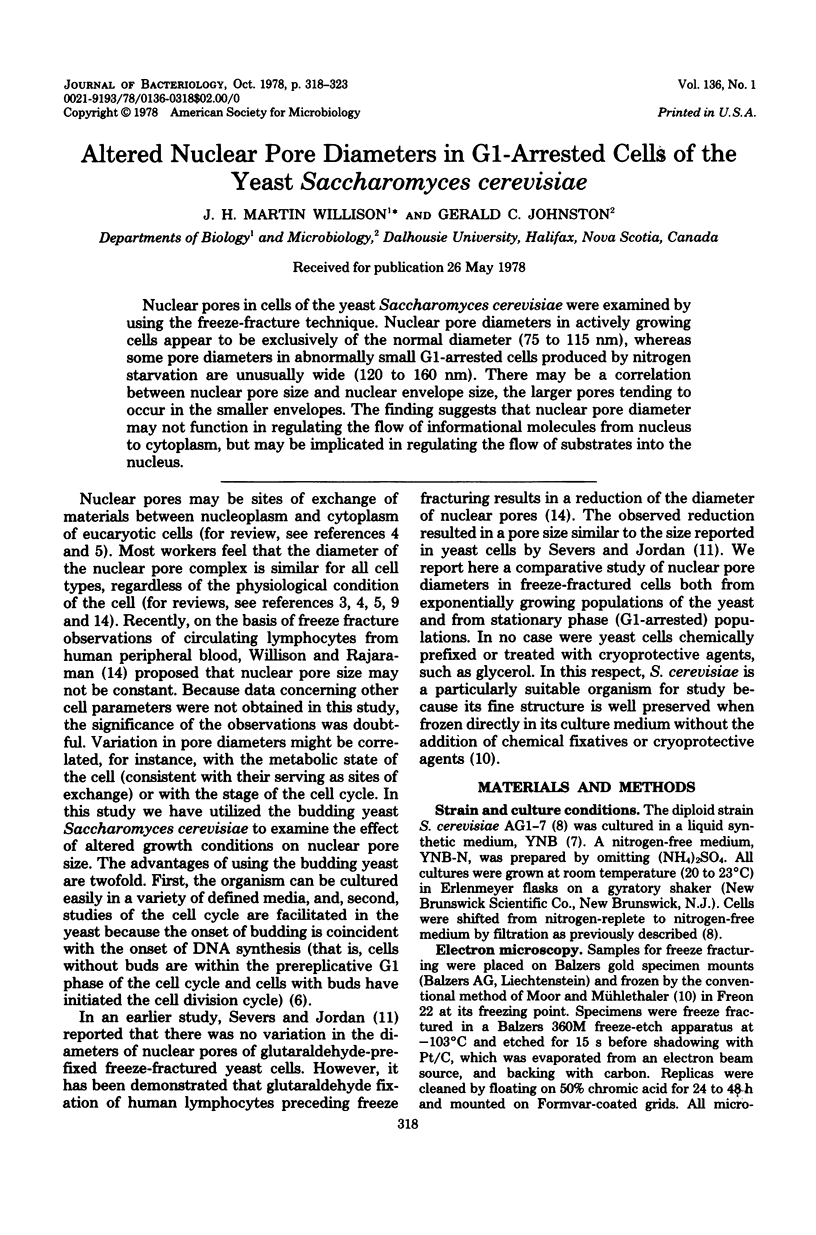
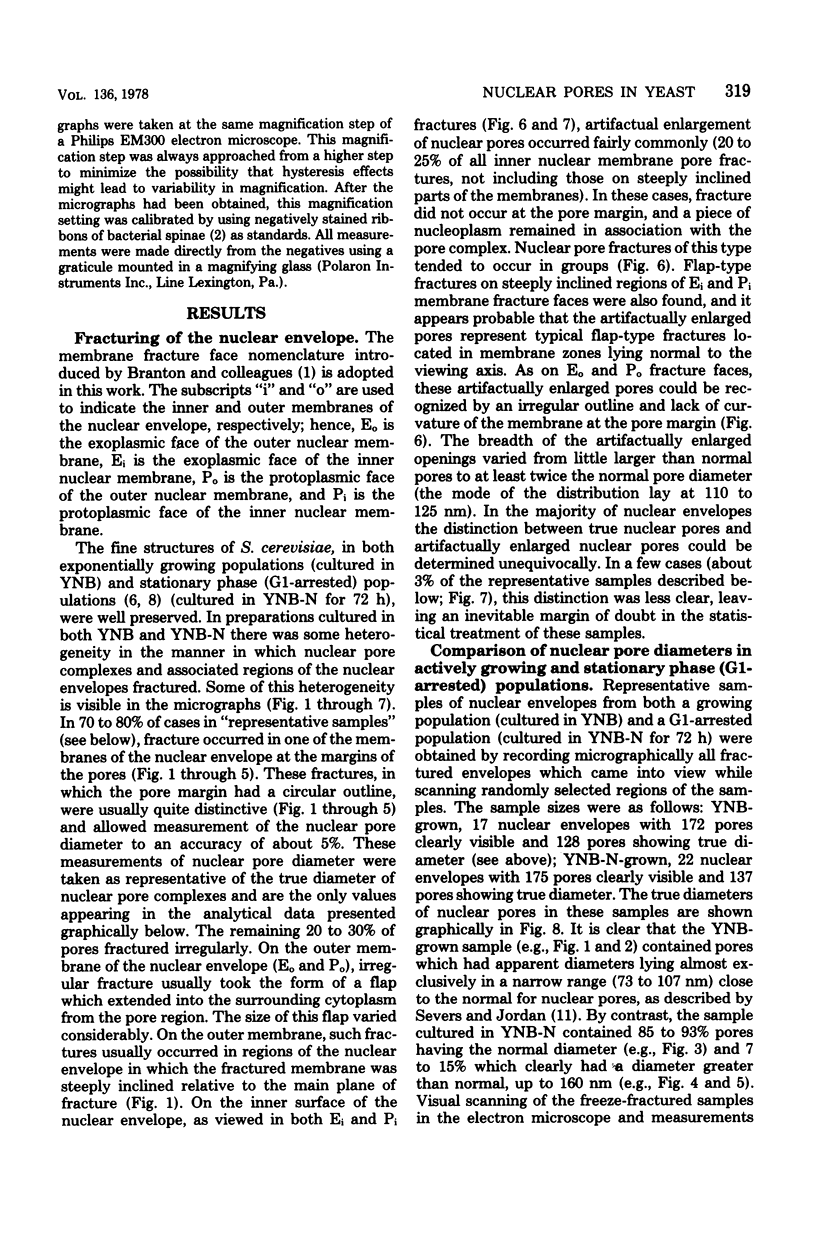
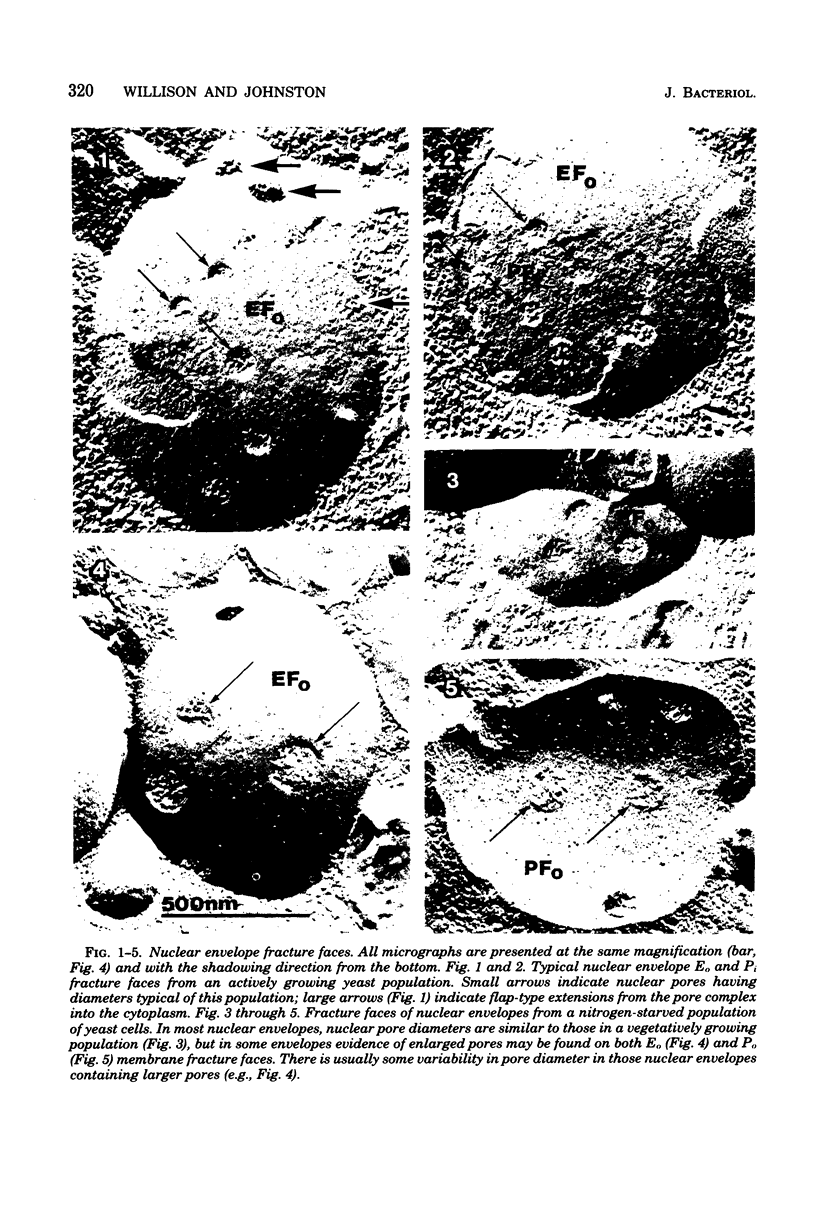

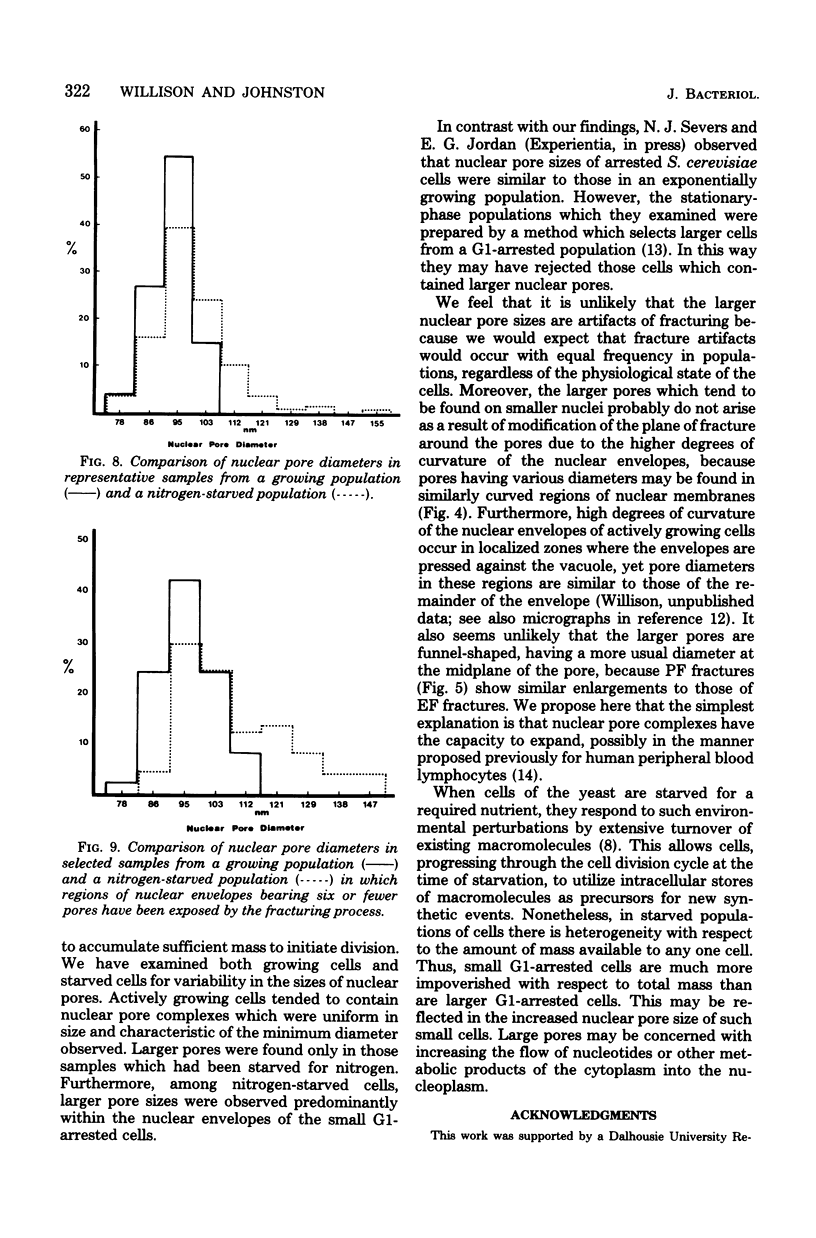
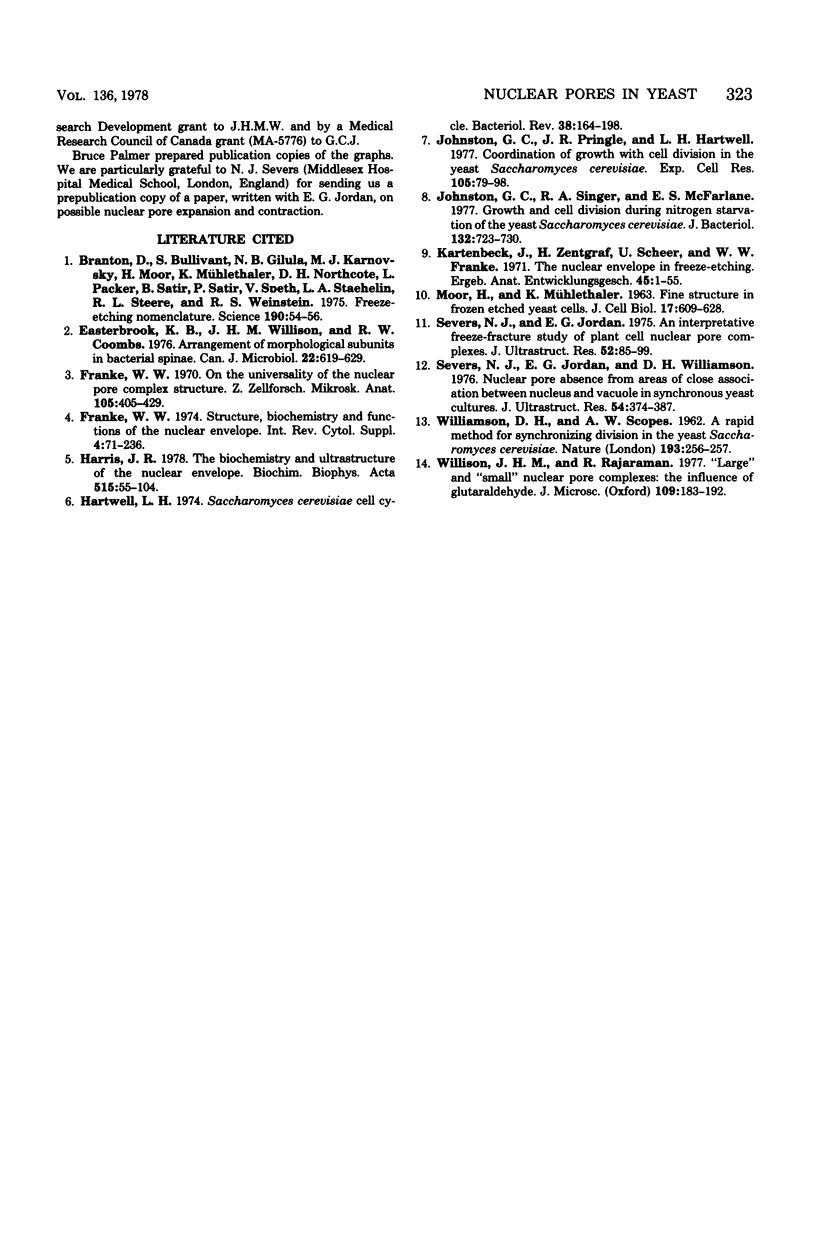
Images in this article
Selected References
These references are in PubMed. This may not be the complete list of references from this article.
- Branton D., Bullivant S., Gilula N. B., Karnovsky M. J., Moor H., Mühlethaler K., Northcote D. H., Packer L., Satir B., Satir P. Freeze-etching nomenclature. Science. 1975 Oct 3;190(4209):54–56. doi: 10.1126/science.1166299. [DOI] [PubMed] [Google Scholar]
- Easterbrook K. B., Willison J. H., Coombs R. W. Arrangement of morphological subunits in bacterial spinae. Can J Microbiol. 1976 May;22(5):619–629. doi: 10.1139/m76-092. [DOI] [PubMed] [Google Scholar]
- Franke W. W. Structure, biochemistry, and functions of the nuclear envelope. Int Rev Cytol. 1974;Suppl 4:71–236. [PubMed] [Google Scholar]
- Harris J. R. The biochemistry and ultrastructure of the nuclear envelope. Biochim Biophys Acta. 1978 Apr 10;515(1):55–104. doi: 10.1016/0304-4157(78)90008-4. [DOI] [PubMed] [Google Scholar]
- Hartwell L. H. Saccharomyces cerevisiae cell cycle. Bacteriol Rev. 1974 Jun;38(2):164–198. doi: 10.1128/br.38.2.164-198.1974. [DOI] [PMC free article] [PubMed] [Google Scholar]
- Johnston G. C., Pringle J. R., Hartwell L. H. Coordination of growth with cell division in the yeast Saccharomyces cerevisiae. Exp Cell Res. 1977 Mar 1;105(1):79–98. doi: 10.1016/0014-4827(77)90154-9. [DOI] [PubMed] [Google Scholar]
- Johnston G. C., Singer R. A., McFarlane S. Growth and cell division during nitrogen starvation of the yeast Saccharomyces cerevisiae. J Bacteriol. 1977 Nov;132(2):723–730. doi: 10.1128/jb.132.2.723-730.1977. [DOI] [PMC free article] [PubMed] [Google Scholar]
- Kartenbeck J., Zentgraf H., Scheer U., Franke W. W. The nuclear envelope in freeze-etching. Ergeb Anat Entwicklungsgesch. 1971;45(1):3–55. doi: 10.1007/978-3-662-10390-6. [DOI] [PubMed] [Google Scholar]
- Severs N. J., Jordan E. G. An interpretive freeze-fracture study of plant cell nuclear pore complexes. J Ultrastruct Res. 1975 Jul;52(1):85–99. doi: 10.1016/s0022-5320(75)80024-4. [DOI] [PubMed] [Google Scholar]
- Severs N. J., Jordan E. G., Williamson D. H. Nuclear pore absence from areas of close association between nucleus and vacuole in synchronous yeast cultures. J Ultrastruct Res. 1976 Mar;54(3):374–387. doi: 10.1016/s0022-5320(76)80023-8. [DOI] [PubMed] [Google Scholar]
- Willison J. H., Rjaraman R. "Large" and "small" nuclear pore complexes; the influence of glutaraldehyde. J Microsc. 1977 Mar;109(2):183–192. doi: 10.1111/j.1365-2818.1977.tb01128.x. [DOI] [PubMed] [Google Scholar]




